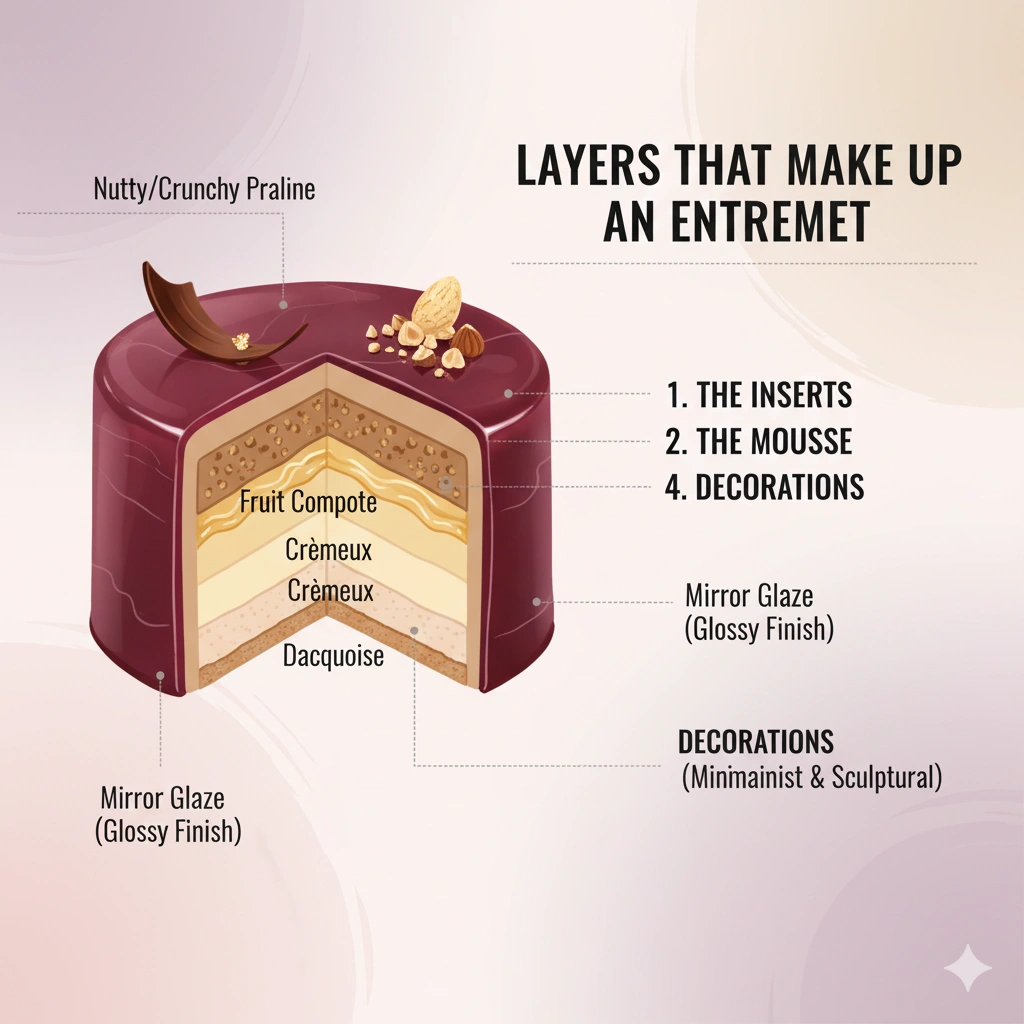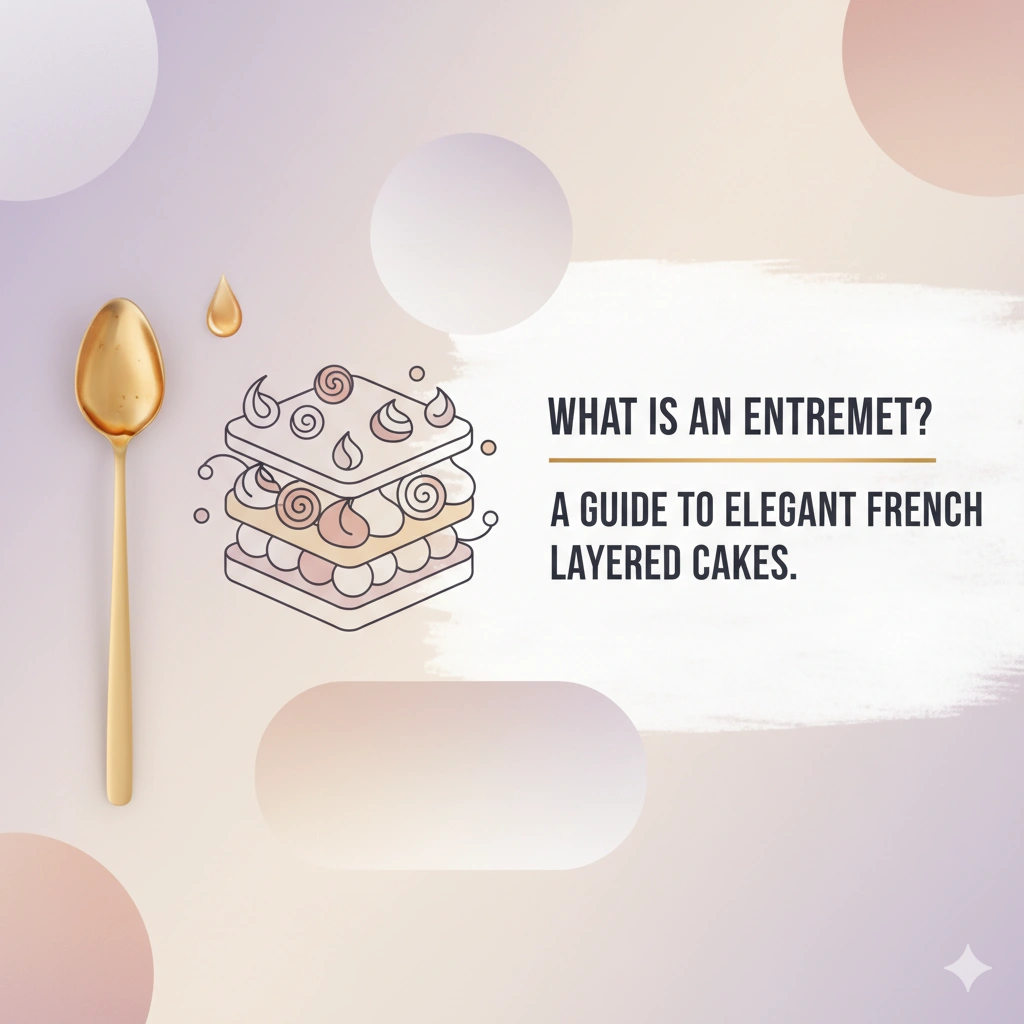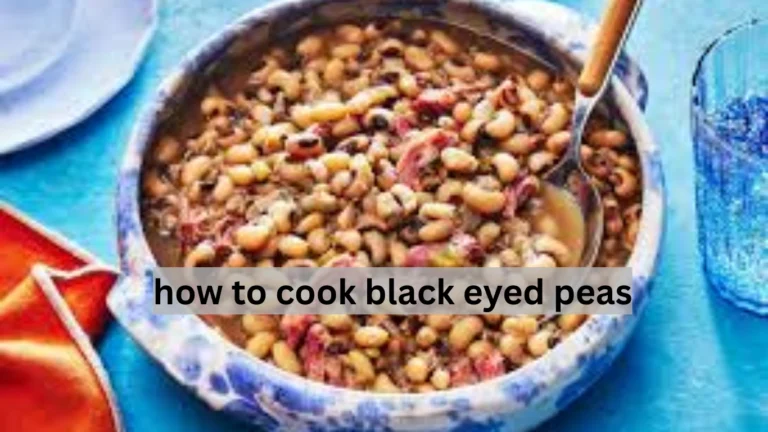What Is an Entremet? A Guide to Elegant French Layered Cakes
If you’ve ever walked past a pastry shop window and stopped in awe at a glossy, jewel-like cake, chances are you were looking at an entremet. This elegant French dessert is far more than just a cake — it’s a masterpiece of layered textures, refined flavors, and artistic presentation.
It combines several pastry techniques into one showstopping dessert, making it as fun to cut into as it is to admire. Let’s dive into what makes it so special, how it’s built, and why it’s one of the most rewarding desserts to try at home.
What Exactly Is an Entremet?
At its core, an it is a mousse-based cake that hides multiple “inserts” or layers inside. Each slice reveals a surprise mix of textures — soft sponge, crunchy bases, smooth crémeux, or bright fruit gels. Unlike classic frosted cakes, everything is encased in a mousse, then finished with a shiny glaze and carefully chosen decorations.
Entremets are not everyday desserts. They’re the kind of refined pastry you’d find in high-end patisseries or as the centerpiece of a celebratory dinner.
Layers That Make Up an Entremet

1. The Inserts
Inside every entremet are hidden layers called inserts. These might include:
- Crémeux or custard for richness
- Fruit compotes or jellies for acidity and brightness
- Nutty or crunchy bases like praline feuilletine
- Light sponge or dacquoise for structure
Each element brings something unique — creaminess, crunch, tartness, or nuttiness. Together, they create balance so no bite feels too heavy or too sweet.
2. The Mousse
The mousse is the heart of the entremet. Usually chocolate-, nut-, or fruit-based, it surrounds the inserts and gives the dessert its smooth shape. To keep it airy yet stable, pastry chefs often add gelatin or cocoa butter. The mousse is set in silicone molds or cake rings, which allow for striking designs ranging from clean cylinders to modern geometric shapes.
3. The Glaze
Perhaps the most eye-catching part of an entremet is its glossy coating. Known as a mirror glaze, this reflective layer can be bold and colorful or simple and elegant. Styles vary — from marble effects to metallic sheens — but the purpose is always the same: to give the cake a flawless, polished finish.
4. Decorations
The finishing touch is the decoration. Forget buttercream flowers or heavy piping — entremet décor leans toward minimalist elegance or sculptural art. Think chocolate shards, delicate tuiles, or subtle nut garnishes. Decorations don’t just add beauty; they also introduce extra textures and flavors to each slice.
Why Entremets Feel So Special
Part of the magic of it is the reveal. From the outside, it looks sleek and uniform. But once you cut into it, hidden layers come alive in a colorful cross-section — a true “wow” moment at the table.
It’s also a test of skill for pastry lovers. Making one takes patience and precision, but the end result is something that feels professional and deeply satisfying.
Can You Make an Entremet at Home?
Yes — but be prepared for a project! It usually takes 2–3 days because of freezing and setting times. Here’s why it’s worth it:
- You’ll practice multiple pastry skills (mousse, glazes, sponges, custards).
- You’ll create a dessert that looks bakery-worthy — even from a home kitchen.
- You’ll impress your guests with something they’ll likely never forget.
The most satisfying moment? Pouring that silky glaze and seeing your creation shine like glass.
Essential Tools for Making Entremets
You don’t need a professional pastry kitchen, but the right equipment makes a big difference:
- Silicone molds or cake rings (for shaping and easy unmolding)
- Stand mixer & whisk (for mousse and sponge)
- Hand blender (for smooth glazes and ganaches)
- Offset spatula & rack (for glazing without mess)
- Kitchen thermometer & scale (precision is key in pastry)
Optional tools like acetate sheets, airbrushes, or tuile molds can elevate the look, but they’re not mandatory for beginners.
Conclusion
An entremet is more than dessert — it’s edible art. With its hidden layers, silky mousse, glossy glaze, and delicate decorations, it represents the very best of French pastry. While it takes patience and practice to master, the payoff is a dessert that feels both luxurious and unforgettable.
If you’re ready to challenge yourself in the kitchen, there’s no better project than making your first entremet. Who knows? It might just become your signature showstopper.
FAQs
1. What makes an entremet different from a regular cake?
Unlike frosted cakes, entremets are mousse-based with hidden inserts and finished with a mirror glaze instead of buttercream.
2. How long does it take to make an entremet?
Typically 2–3 days, since each layer needs chilling or freezing before assembly.
3. Do I need special equipment to make one?
A silicone mold or cake ring is essential. Other tools like a thermometer or offset spatula make the process smoother but aren’t mandatory.
4. Can I make an entremet without gelatin?
Yes, but gelatin helps the mousse hold its shape. Alternatives like agar-agar can work, though they change the texture slightly.
5. Is an entremet only for special occasions?
While often seen at weddings or restaurants, entremets can be made at home for birthdays, anniversaries, or anytime you want to impress.







